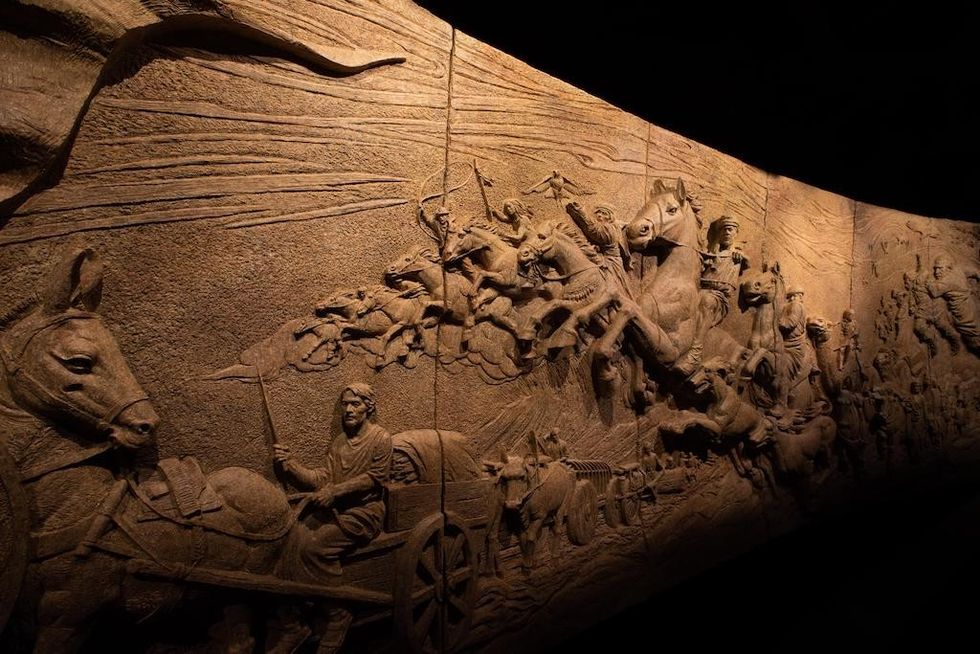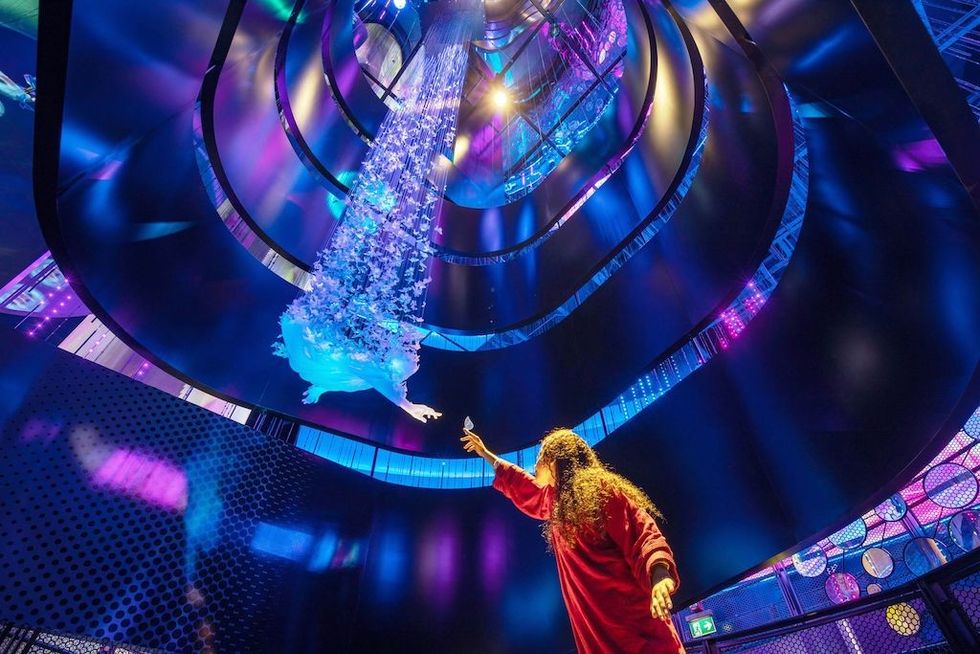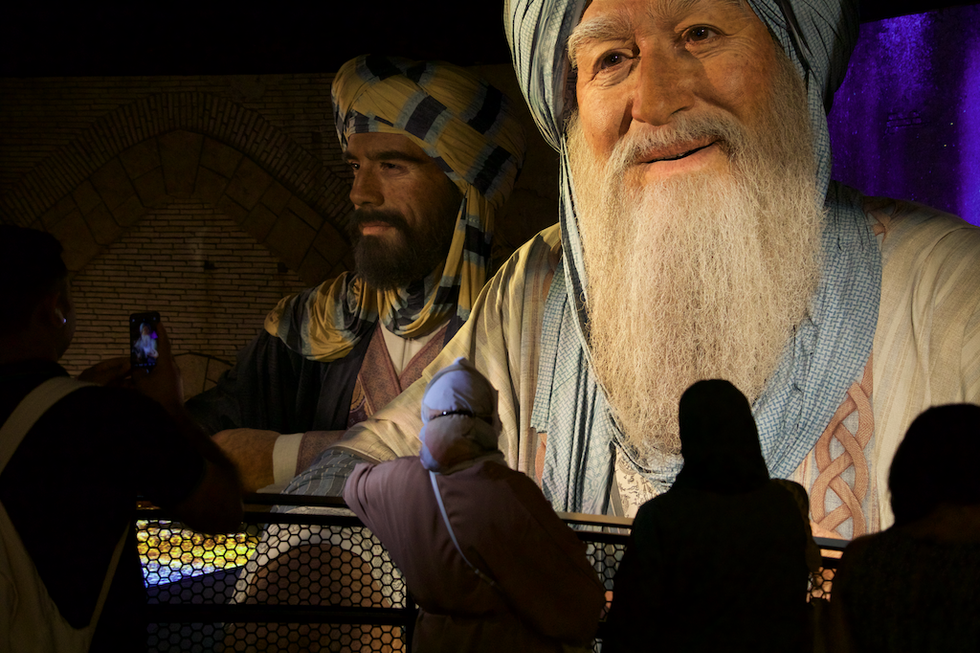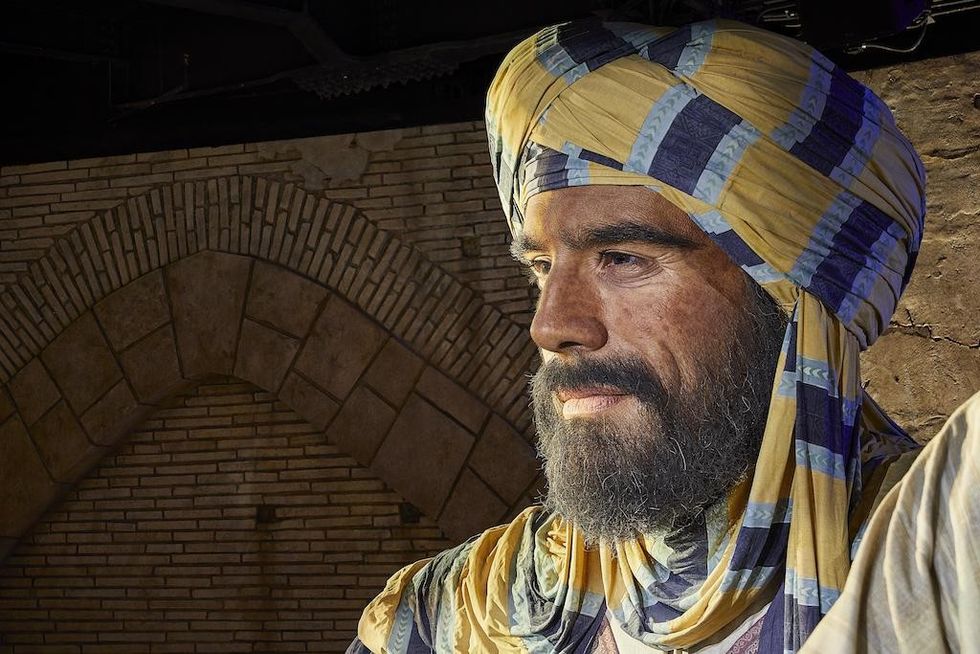The National Memorial Arboretum near Lichfield in Staffordshire is the UK’s Garden of Remembrance. Set in 150 acres, it was voted ‘Britain’s Favourite National Treasure’ in a recent poll, beating Cornwall’s Eden Project.
The Arboretum was the inspiration of David Childs, a retired Naval Commander. During a visit to Arlington Cemetery in the States in 1998 it suddenly dawned on him that, although virtually every town and village in the UK had memorials to those who had died serving in WW1 and WW2, there was no easily accessible memorial to those who had lost their lives in active service since 1945.
It was after visiting the National Arboretum in Washington that Childs formed the idea of a living memorial landscape, not a cemetery but a national centre of remembrance in the centre of the UK.
Redland (now Lafarge) Aggregates offered him a piece of filled-in quarry land on a peppercorn lease of a pound a year on a 999 year lease, and with a skeleton team of volunteers, he started to create the National Memorial Arboretum.
Sarah Montgomery, Managing Director of the National Memorial Arboretum since 2013, spoke to Blooloop about her role and the role of the Arboretum as both a place of commemoration and a family-friendly attraction.
Montgomery, who has been General Manager of both Chatsworth House Trust and Warwick Castle, describes the NMA as "an extraordinary place to work - so interesting and diverse. I’ve been taken by surprise. The fact that it’s not a melancholy place is one of the most surprising things. In fact, one of the most frequent exit comments from visitors is that they found it inspirational.”
She adds, “I know people always talk about their attraction being unique, but there actually isn’t another place, even globally, that is a national centre of remembrance with over 300 memorials to a complete cross-section of contribution to our present-day society.”
The memorials are eclectic. Service and Sacrifice, a monument to the contribution made by the Women’s Institute on behalf of the nation stands beside the Armed Forces Memorial. A monument by the Premier League, The FA and the Football League in partnership with the British Council, uses the 1914 Christmas Truce football match as a symbol of reconciliation.
“We have other areas of reconciliation, " explains Montgomery. "For instance, there’s a grove of trees with a circle of stones from Dresden Cathedral which were given to us by the people of Dresden. There are memorials to the civilian services as well: the RNLI memorial garden is a beautiful replication of the seashore, with the prow of a lifeboat in the middle. You actually walk in the memorial, and there are seagrasses.”
Each of the memorials is individually designed by the groups or associations concerned; the NMA is simply the venue.
“The memorial will be here in perpetuity, so we give guidance in terms of materials and construction. Many of the groups will never have done anything like this before, so we also try to give them some ideas for inspiration by showing them the memorials that are really quite different, to prompt them to think laterally about how their memorial might be designed and the symbolism that might be included. It doesn’t necessarily have to be literal.”
She gives an example:“One of the most extraordinary memorials dedicated last year is the Naval Services Association, which is 12 feet long and is panels of different coloured stained glass with seven different blues representing the different oceans, and yellow and red representing the sunrise and sunset. It’s designed so that when you look along it horizontally it looks like the masts of boats in harbour, and it has a poem by Tennyson which has a particular resonance for the Navy, round the edge. It works on different levels. It’s very striking, and it polarises opinion."
The thing that particularly strikes Montgomery is the fact that the design of each memorial is very close to the heart of the organisations that institute them.
“We have a Bevin Boys Memorial to people who were conscripted to the Services in the Second World War, but forced to go down the mines to keep coal-mining going in the UK. It’s hewn from a piece of rock mined from one of the Bevin Boys’ mines, and the sculptor has carved hidden mice round the memorial because the mines were absolutely full of mice. Children engage with it. The chap who initiated the memorial was a Bevin Boy, and is now 93. When the Countess of Wessex came to unveil it he was overcome with emotion and against all protocol flung his arms round the Countess’s neck – they were both very tearful. He was both incredibly happy he’d got the memorial off the ground, and overcome with the significance of the occasion.”
Major Patrick Cordingley, who chaired an appeal for funds to build the new visitor centre, was quoted in the Guardian as saying the arboretum was “…a little eccentric… It’s very British, because in many ways it’s a muddle”.
Montgomery dismisses the remark as 'classic Patrick'. She says, "We were having lunch. I was sitting at the table with him when he said that to the Guardian journalist, and I thought – now that’s definitely going to appear as a quote.”
She explains that the Arboretum grew up organically. There was no plan. Childs was "just desperate to engage potential people who wanted a memorial here. He couldn’t afford anything as sophisticated as a landscaped master strategy.”
Later, of course, an order began to be imposed, and today Navy memorials tend to be clustered together, as do those of the RAF and the Army.
“The Women’s Institute memorial is a sort of drystone wall serpentine seat, adjacent to the Allied Special Forces memorial. The Salvation Army memorial is in that vicinity, and the Spiritualists have an obelisk there, and it’s also where the Quakers have their memorial, striking in its simplicity: a stone circular memorial with seating round the edge inside: their meetings are in the round – with incredibly simple but powerful interpretation around the side, explaining that they were pacifists but they were stretcher bearers in wars. And it’s beautiful nestling in a wood, really still, near the beehive.”
According to Montgomery, people visit for all sorts of reasons: “You’ve got people who are coming, quite specifically, to remember somebody as an act of remembrance; you’ve got people who are interested in history and heritage and may have no service connection at all, and people who are there to enjoy a walk in the outdoor setting. We’ve just planted up a bluebell wood in the Merchant Navy Wood."
The sheer diversity of memorials provokes a huge range of reactions.
“One of our most visited memorials is slightly controversial as well as being incredibly powerful: the Shot at Dawn memorial.”
Wooden posts stand in the ground in a half-circle reminiscent of an amphitheatre, the posts at the front lower than those at the back , and each has a simple plaque with the name of the soldier and the age at which they were shot. Set at the most easterly point of the site, it gets first light at dawn. The controversy arises from the fact that although those executed were eventually pardoned in 2006, some were shot for desertion, which had potentially endangered the lives of their comrades.
“There is a sculpture of a blindfolded boy who was shot at the age of seventeen, Private Herbert Burden, and six trees symbolising the firing squad.”
Memorial services and functions take place at the NMA almost every day. Sometimes, there can be several large events going on at the same time. The biggest commemorative event this year was the inauguration of the Bastion Memorial on the 11th June, a Service of Remembrance for those killed in Afghanistan, which was attended by Prince Harry with over 2000 people present.
“… all of whom had to be fed at the same time, ” says Montgomery.
The biggest annual event on site is the Ride to the Wall, which is run like a military campaign: a combination of celebration, remembrance and paying respects. Around 20, 000 motorcycle riders, the NMA’s biggest group of fund-raising donors, meet in motorway service stations round the country and ride to the NMA’s Wall. The timings are meticulous, so their arrivals are staggered.
“ There are events running right through the day, ” explains Montgomery. “The Red Devils parachute team, dog-handling, all sorts of activities. And then, at two-thirty, there’s the biggest remembrance service imaginable. I must say the first year I was here it was extraordinary..."
"The service is held on the steps of the armed services memorial, with bikers as far as the eye can see: a sea of black leather".
"They run it quite specifically as a fundraiser for the NMA. The cheque in 2014 was for £82, 500.”
Until recently, the sheer logistics of organising and coordinating the NMA’s complex calendar of events was a challenge.
“When I arrived it was done manually, but we have invested in an events management system which doubles as an admissions system: Maxim by TOR.”
TOR Systems is a market leader in state of the art, cost effective ticketing and booking solutions. Its real time integrated booking and ticketing system, ‘Maxim’ uses industry standard software, and is continuously in development to keep in the vanguard of changing technology.
"Maxim by TOR Systems has been really transformational in terms of much more efficient processing of bookings and activities...."
"...and booking with ancillary services and arranging guides and so on. The reporting we can get out of it will also be very helpful. For instance, for group bookings, we’ll gain much more of an understanding about types of groups coming in, and greater depths of management information. And then, as part of the new Remembrance Centre project, we will have a semi-permanent exhibition for which we will be charging an admission price, so there’s an admissions function on the system, too.”
While visitor numbers have been rising recently, entrance is free, and since the costs of upkeep, maintenance and augmentation are steep, there are necessarily a number of revenue streams.
70% of the NMA’s income is self-generated and raised by people fundraising on its behalf.
There is income from the car park, catering and retail. The Arboretum operates a land train that does an introductory tour of the site and buggy tours, both standard and customised according to the visitors’ area of interest. There are added-value learning activities for schools; a poppy-making workshop, for example, where children each make a poppy, then a communal wreath, before going to a memorial and learning about its history and symbolism:
“Then, they’ll hold a mini service, and quite often we’ll get a veteran to talk to the children. Our oldest veteran is 93 years old, from the Burma Star Association, and he was a Far East Prisoner of War. We’ve got a section of the Burma Railway here, so he actually talks to the children about his experiences as a PoW.”
The Royal British Legion gives a grant of £600, 000 each year and, right now, the NMA benefits from a grant from the Libor Fund comprising £250, 000 p.a. for two years, plus a half year at £125, 000: funds generated by the penalties paid by banks. Montgomery comments:
“The misdeeds of the banks are actually supporting us, but that’s due to finish in March next year. One of my mini-challenges is replacing that funding.”
Since her appointment two years ago, Montgomery has successfully implemented strategies to attract new audiences.
“The first Easter that I was here, there were virtually no families or children on site, which I found extraordinary.”
Her response was to introduce a programme of family and child-friendly events and activities including kite-making, bug-hunting packs, nature walks for children and felt-making. There is an animal handler who comes in, and a variety of trails.
“A lot of the memorials have animals as symbols, so we’ve done a trail of engaging through discovery which involves spotting the animal, then finding out why the animal is on that memorial. It’s fun to do, particularly where the symbols are quite hidden, like the mice on the Bevin Boys memorial, and the rat on the Women’s Land Army memorial.”
The result has been a significant increase in the numbers of families visiting.
She adds, “For our schools business we’ve recruited a Head of Heritage and Learning, an HLF funded position. Since we’ve appointed her, our schools visits have increased from 4.5 thousand to over 10 thousand in eighteen months, and that’s rising exponentially. We’re now funding three additional roles on top of that on the learning side.”
Over the last five years, the Arboretum has been engaged in a campaign to raise £15.7 million in funding for a new Visitors’ Centre which will include exhibition space, a Remembrance Centre and educational facilities. This new addition will enable the NMA to enlarge its engagement from 10, 000 school children a year to 25, 000. In April, the Arboretum’s fundraising passed the £10 million mark. The building work is expected to be completed by the end of 2016.
“When the current Visitor Centre was built it was designed for 65, 000 visitors, and we had round about that number up until 2007, and then the Armed Forces Memorial was constructed, and dedicated in the presence of the Queen by the Archbishop of Canterbury.
"The year after the Armed Forces Memorial was dedicated, we had 300, 000 visitors. It was like a cork out of a bottle."
Montgomery says, "But the facilities are inadequate for those numbers – we don’t have enough loos. We hire a permanent marquee which seats 300 for sit-down lunches all year round, which is a massive cost."
There will be improvements to the shop, café, restaurant and reception area.
“I think the new Visitor Centre will really be the springboard for us to create greater awareness, ” says Montgomery. “At the moment, we’re the classic ‘undersold, undertold’ site. We’re quite well-known in the Midlands, but outside of that awareness drops of very markedly.”
She is enthusiastic about its potential.
“There will be a semi-permanent exhibition exploring the history of remembrance, which is a basic need that goes back thousands of years.”
There is an ancient burial mound, a scheduled monument, on the NMA site that has never been interpreted, and is currently sown as a wildflower meadow. The exhibition will use it as a vehicle to take the viewer back over those thousands of years before returning to the present day. Through a number of media including contemporary dance, the exhibition will explore modern remembrance, including virtual remembrance online, deconstructing the symbolism of the poppy, and focusing on a selection of the memorials and the human stories behind them.
There will also be an opportunity to record memories or reactions to the site. Temporary exhibition spaces will house anything from an exhibition on a new memorial to an artistic installation.
“I was really struck by an artistic installation in Londonderry, which was a wooden sculpture that the community contributed to, and had remembrance attached to it, and then they set fire to it. Now, we wouldn’t be doing that indoors, but you can imagine a work of art that is a response either to a natural setting, or to the remembrance element. And, then a free exhibition, for areas such as community art.”
She adds, “The new Remembrance Centre will both give us national stature and also have facilities that enable us to really create an amazing introduction. It’s a gateway into the arboretum; an amazing introduction to the place and what it means.”




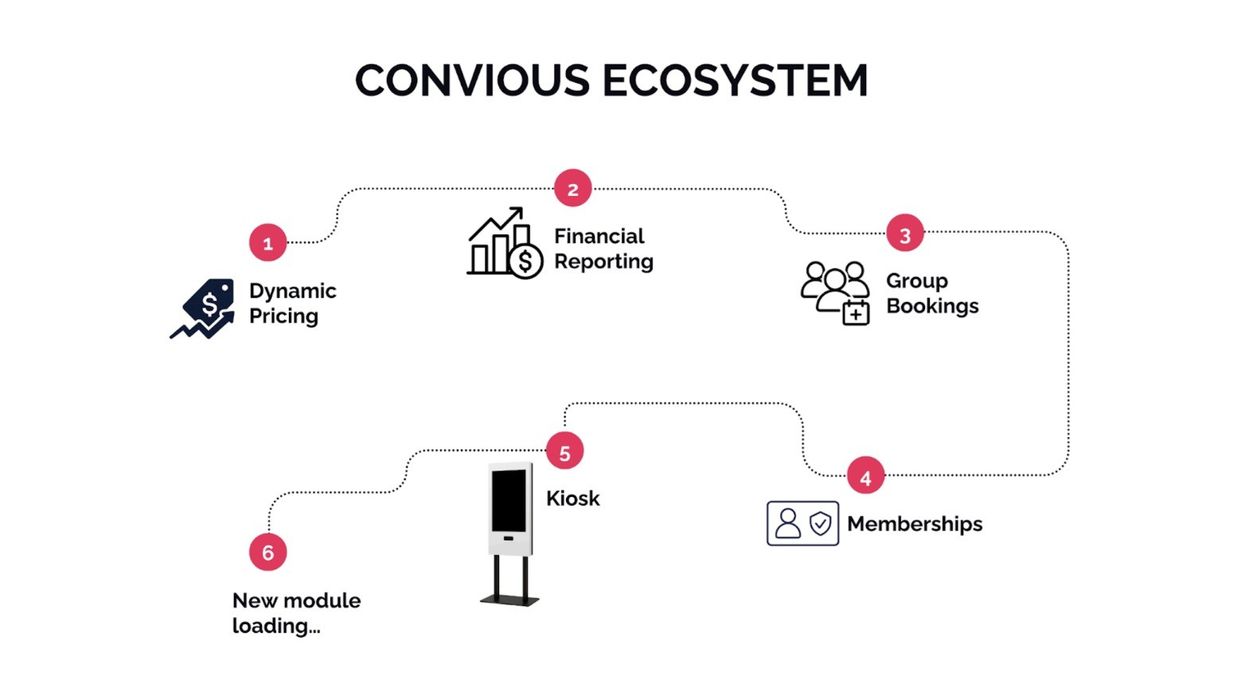

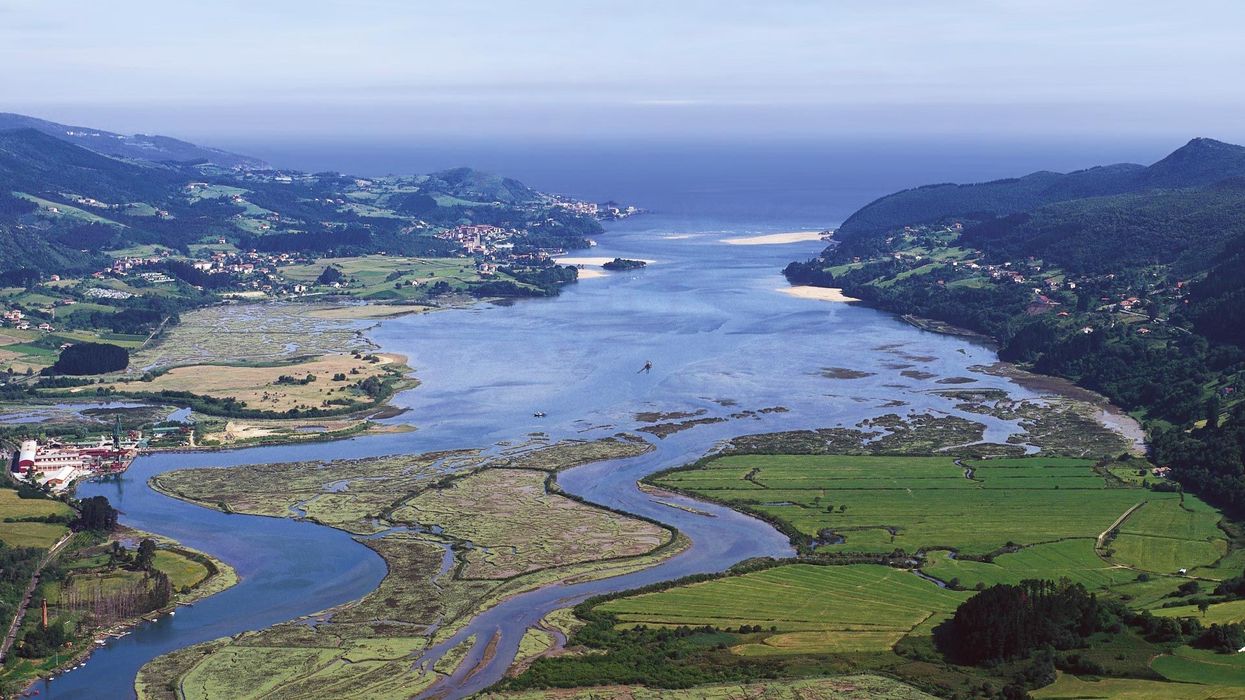
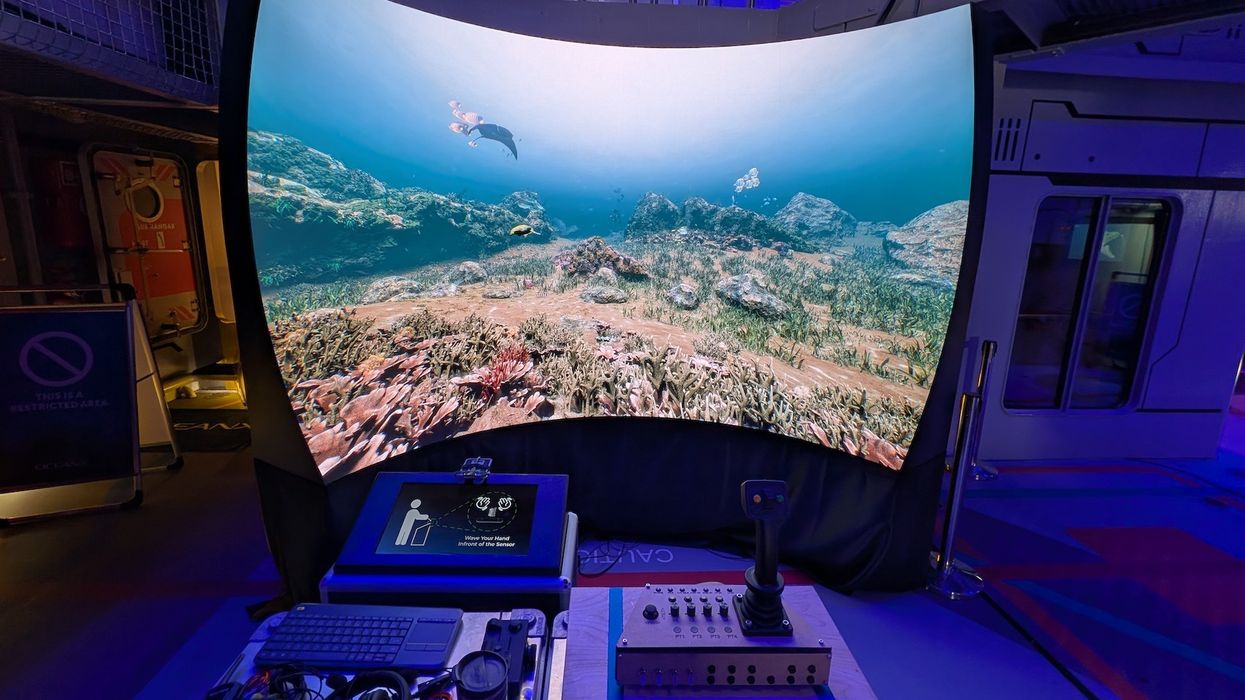
 TM Lim and Adam Wales
TM Lim and Adam Wales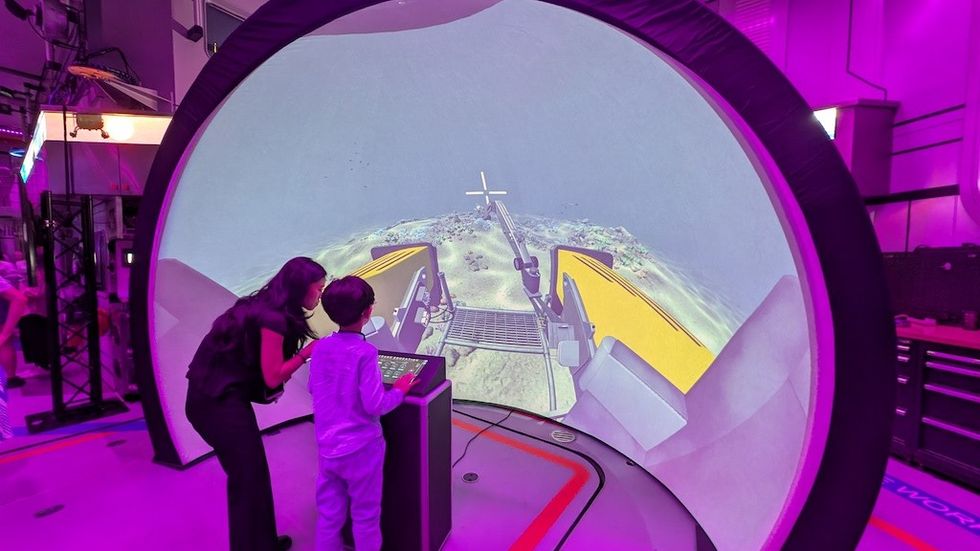
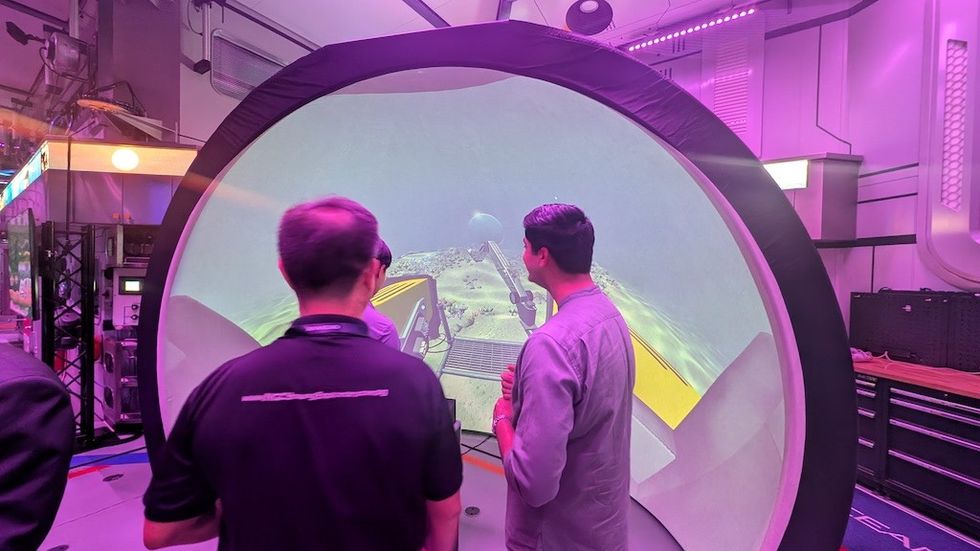
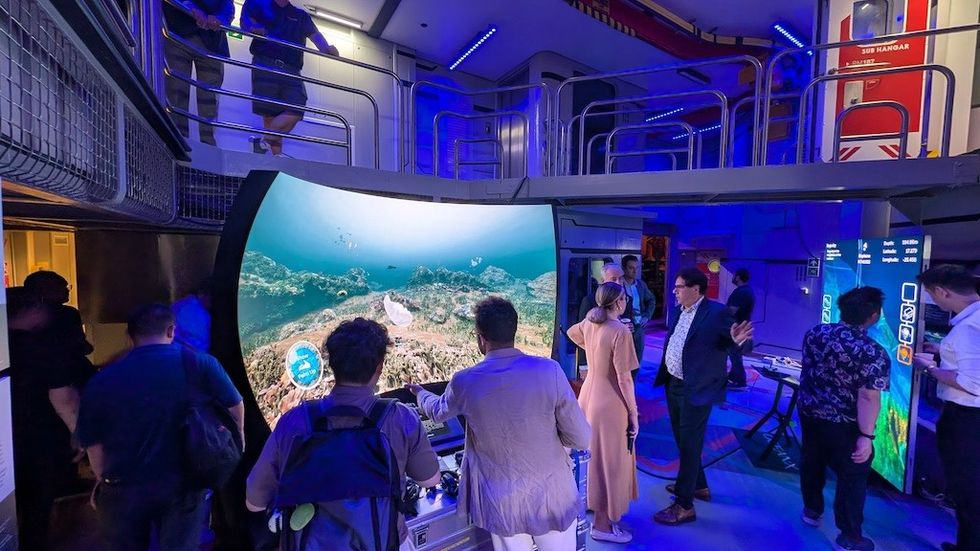

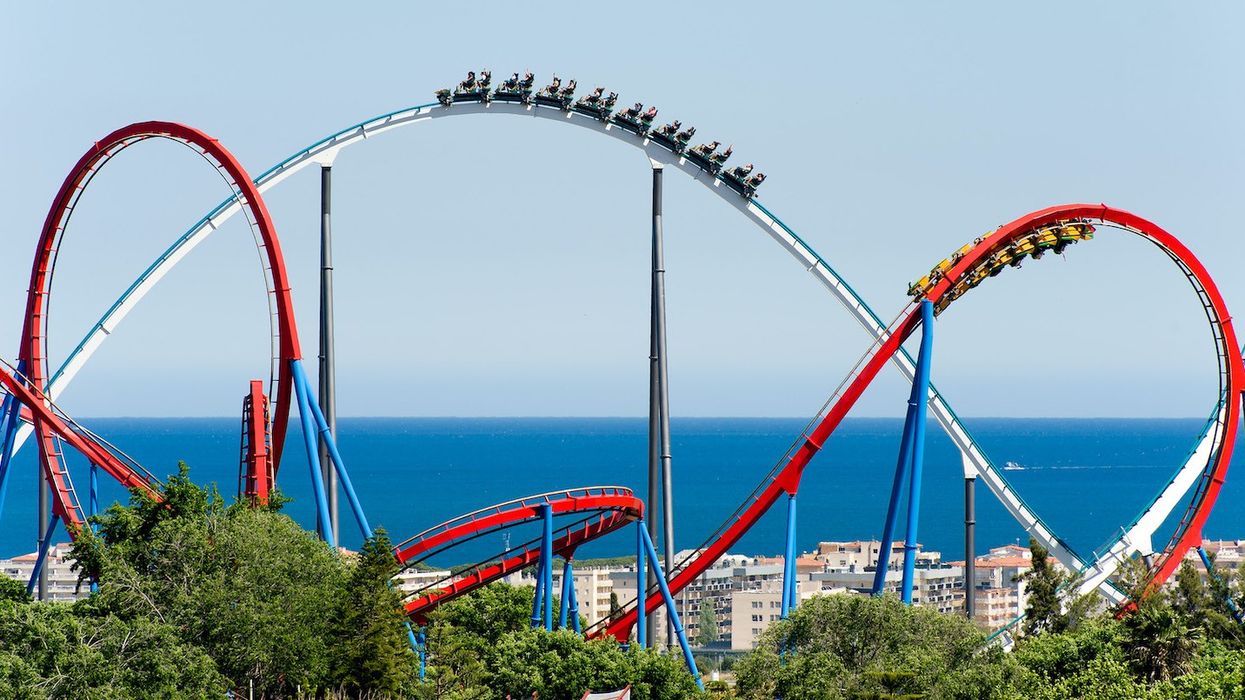

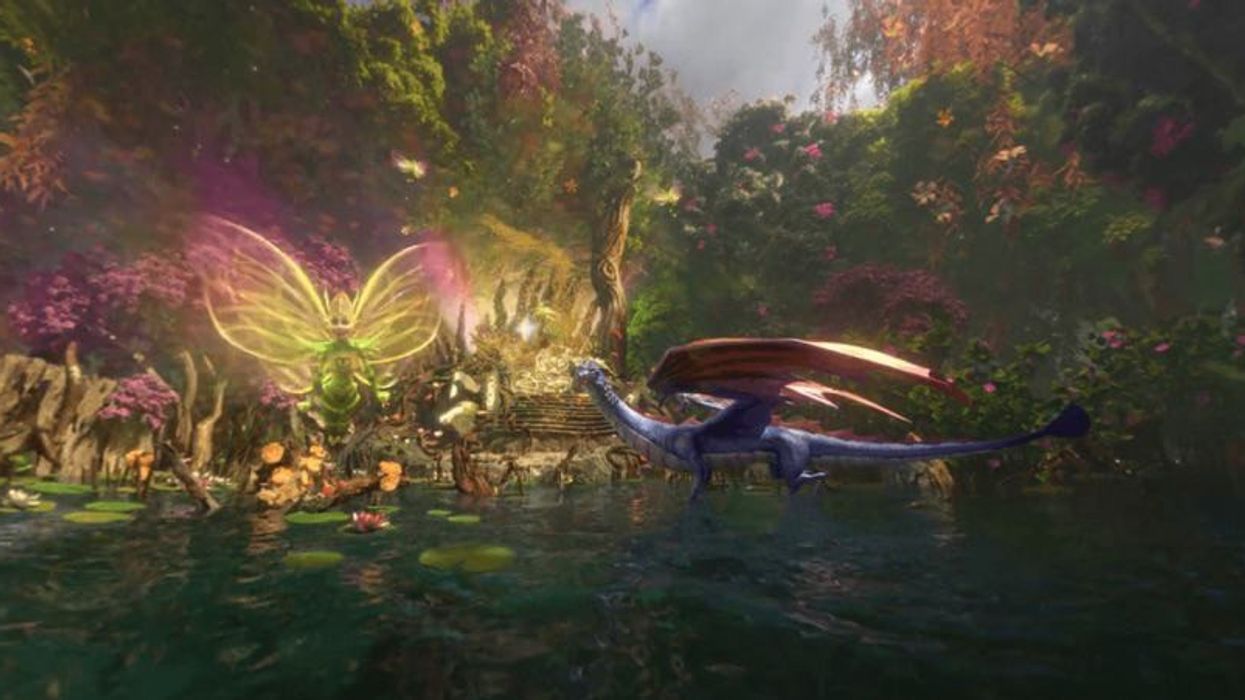



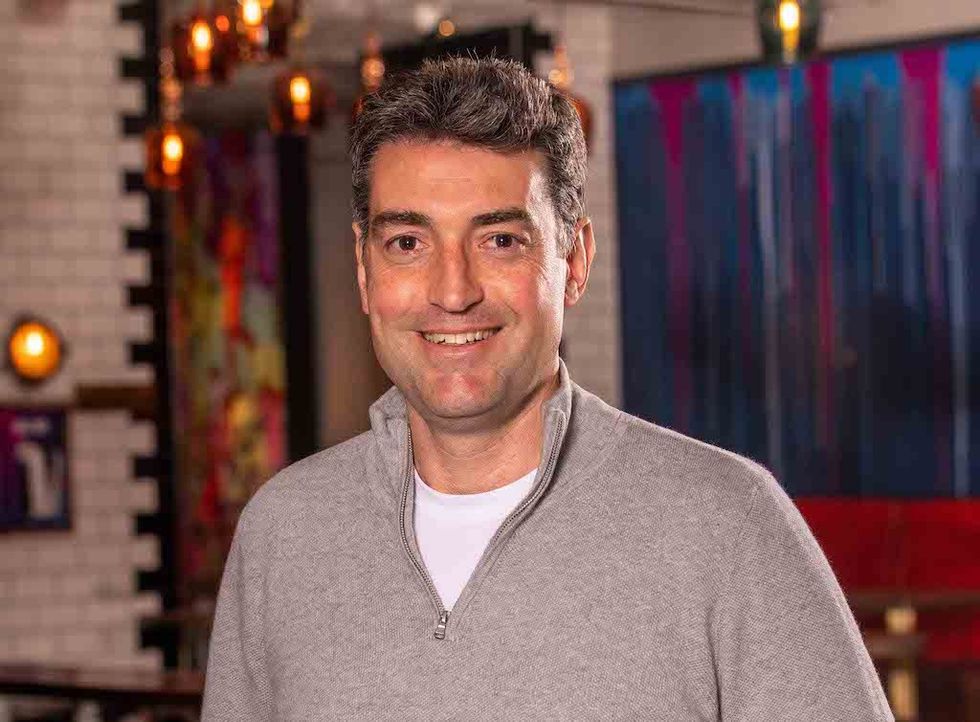 Toby Harris
Toby Harris Hijingo
Hijingo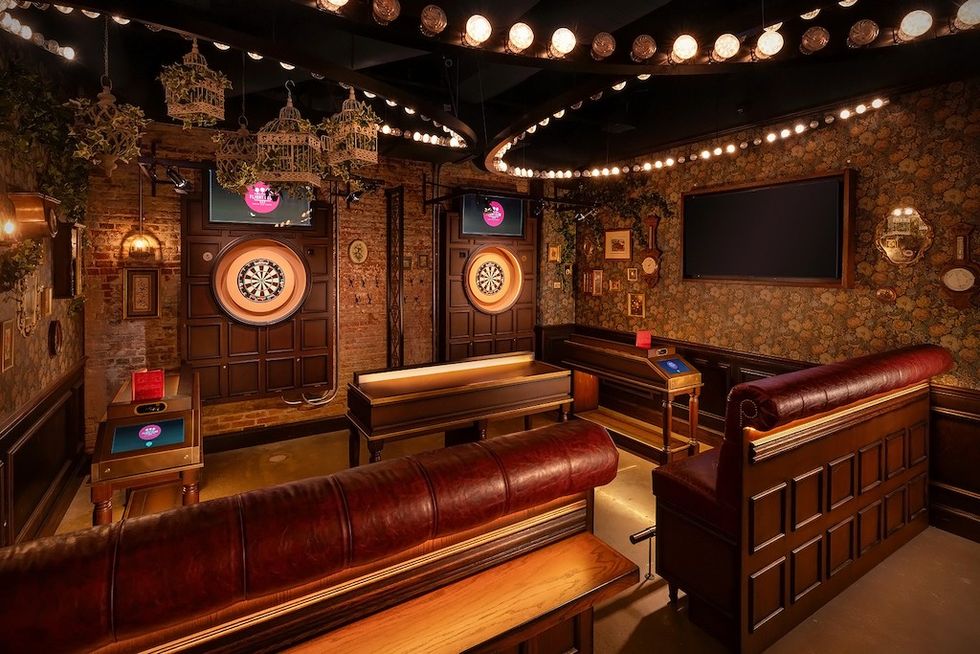 Flight Club, Washington D.C.
Flight Club, Washington D.C.
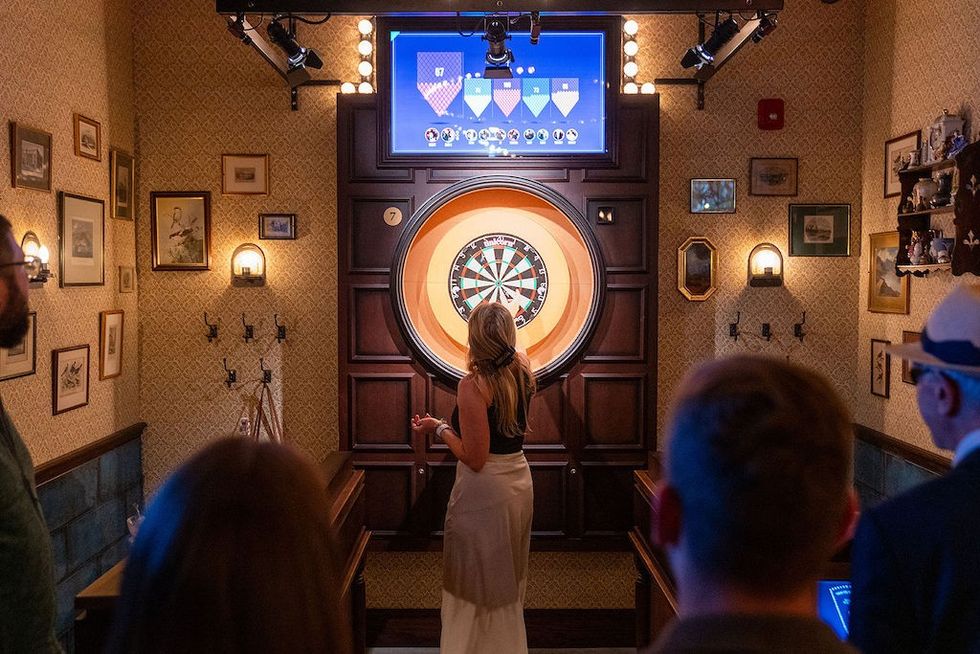 Flight Club Philadelphia
Flight Club Philadelphia Flight Club Philadelphia
Flight Club Philadelphia Bounce
Bounce Hijingo
Hijingo Bounce
Bounce
 Fernando Eiroa
Fernando Eiroa
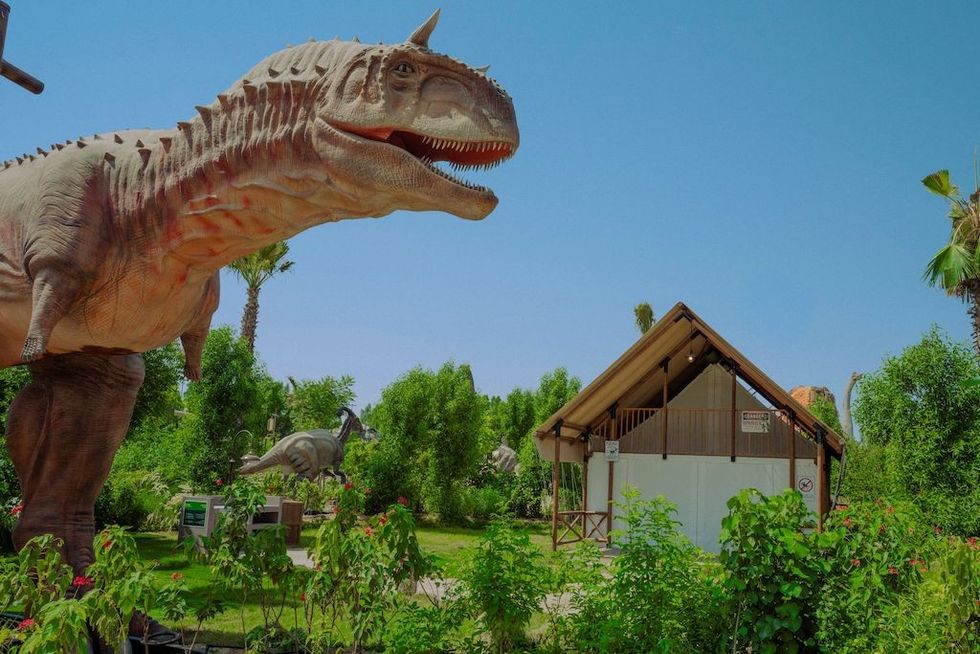
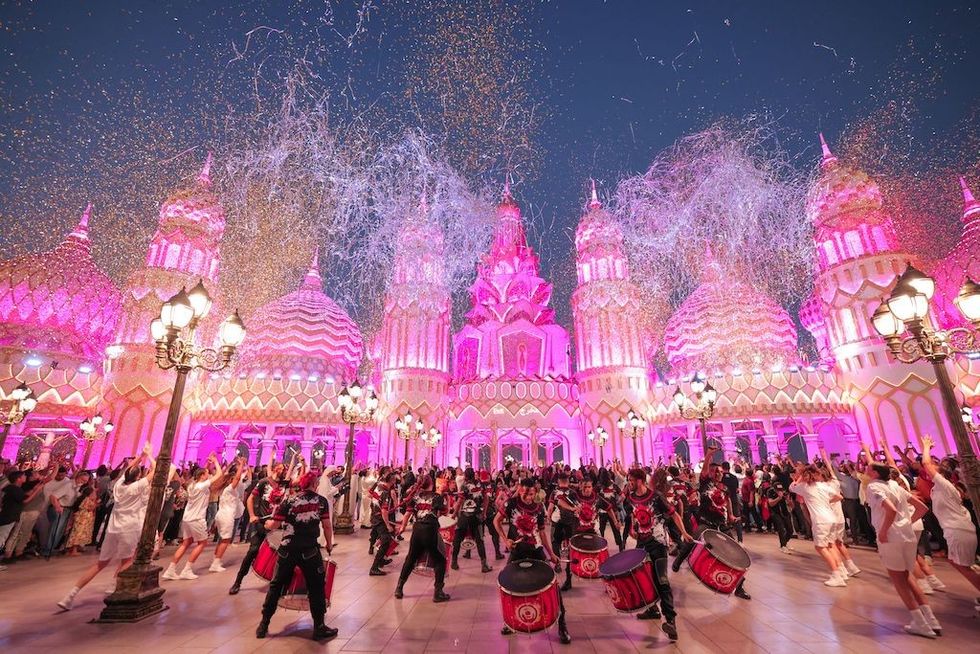
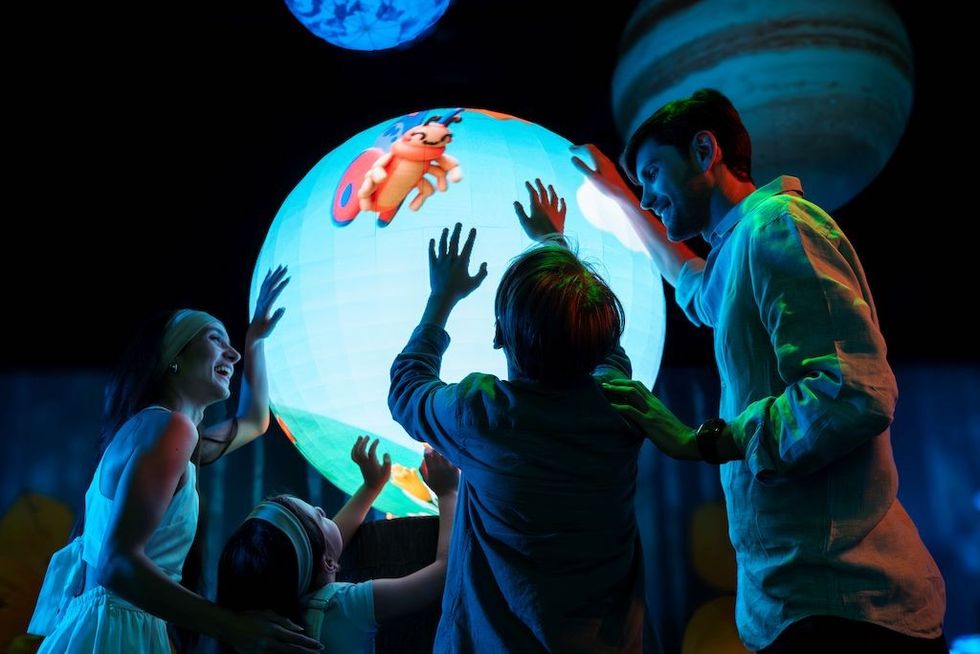







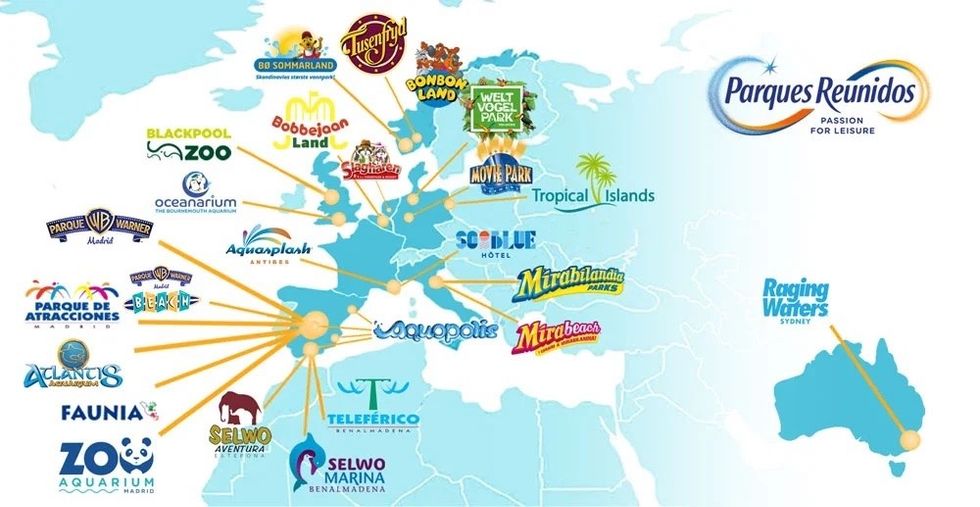
 Nickelodeon Land at Parque de Atracciones de Madrid
Nickelodeon Land at Parque de Atracciones de Madrid Raging Waters
Raging Waters  Mirabilandia's iSpeed coaster
Mirabilandia's iSpeed coaster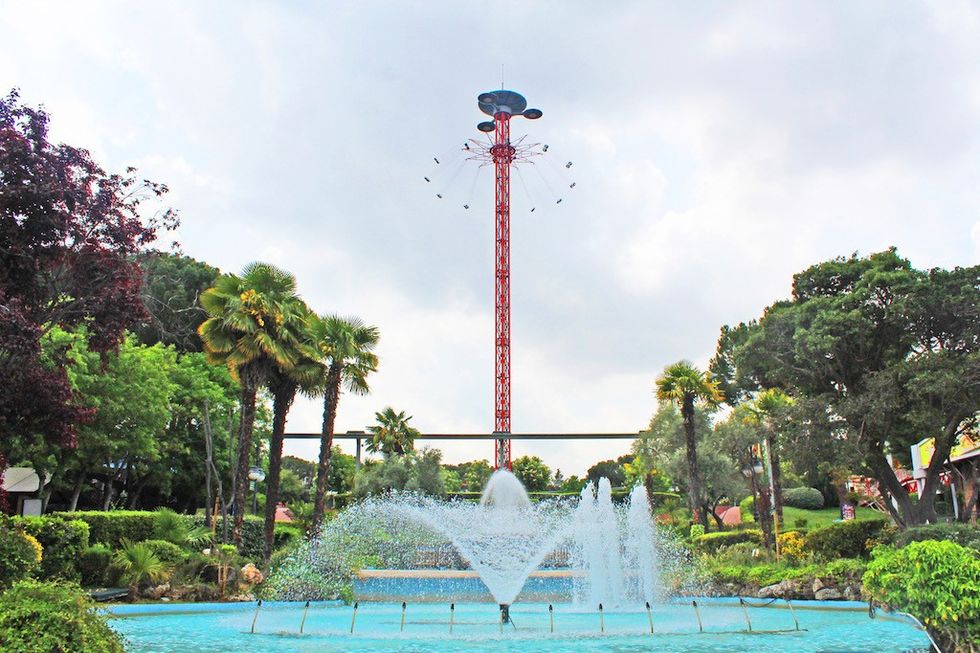 Parque de Atracciones de Madrid
Parque de Atracciones de Madrid Ferracci at the ribbon-cutting ceremony for Nickelodeon Land at Mirabilandia, with (left) Marie Marks, senior VP of global experiences for Paramount and (cutting the ribbon) Sabrina Mangina, GM at Mirabilandia
Ferracci at the ribbon-cutting ceremony for Nickelodeon Land at Mirabilandia, with (left) Marie Marks, senior VP of global experiences for Paramount and (cutting the ribbon) Sabrina Mangina, GM at Mirabilandia Tropical Islands OHANA hotel
Tropical Islands OHANA hotel Elephants at Blackpool Zoo
Elephants at Blackpool Zoo 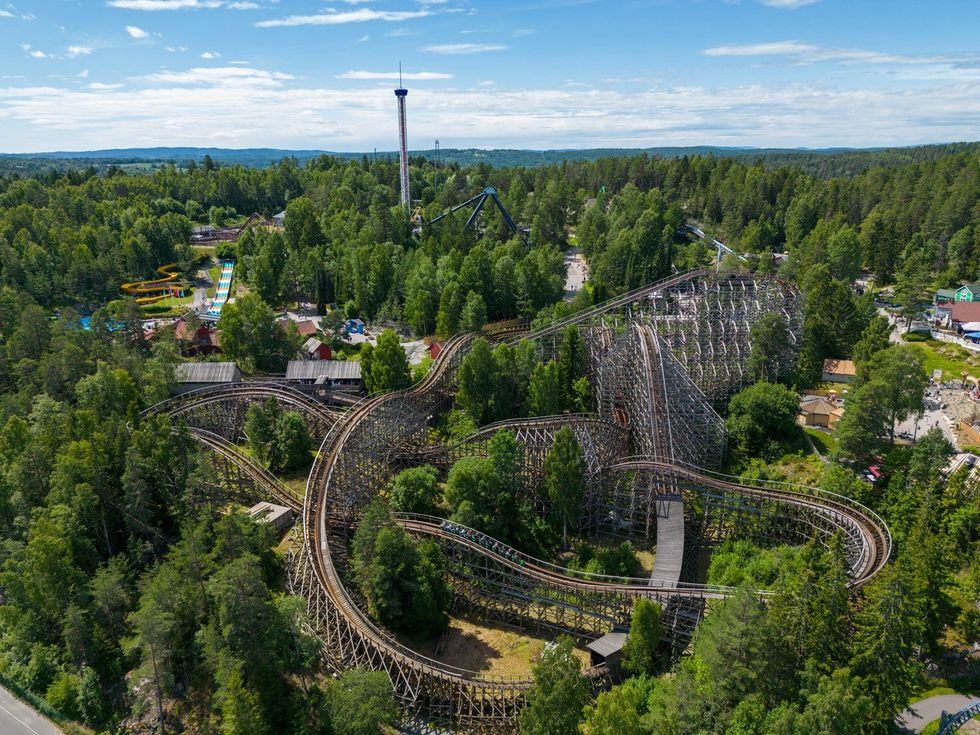 Tusenfryd
Tusenfryd
 Andrew Thomas, Jason Aldous and Rik Athorne
Andrew Thomas, Jason Aldous and Rik Athorne
